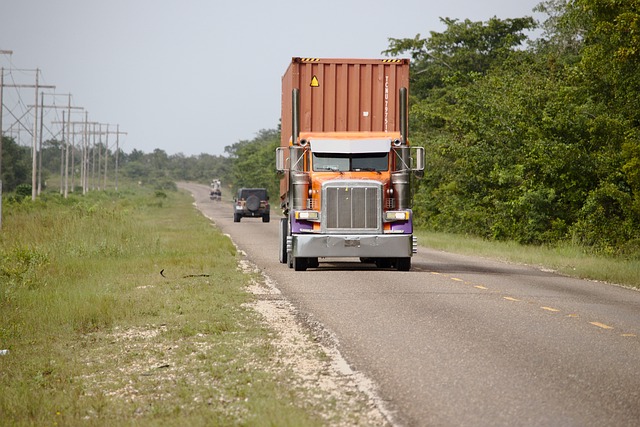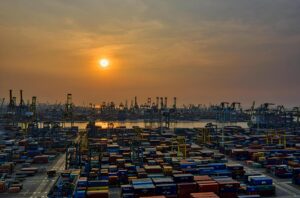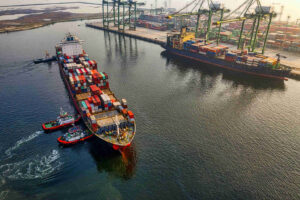
Cross-border freight forms the backbone of international trade and commerce, connecting businesses across borders and enabling seamless transportation of goods. Whether it’s goods moving between Malaysia and Singapore or between other neighboring countries, cross-border freight ensures economic collaboration and efficiency. This article provides a comprehensive look into cross-border freight, including its meaning, significance, and logistics, with a particular focus on cross-border trucking, a key mode of transportation.
What is Cross-Border Freight?
At its core, cross-border freight refers to the transportation of goods across international borders. This transportation can be accomplished via different modes, including trucking, rail, air, and sea. This involves logistics, customs clearance, and regulatory compliance to ensure shipments move seamlessly between countries. Understanding the complexities of cross-border freight is essential for businesses engaging in international trade, especially in Southeast Asia’s dynamic market.
For example, a shipment of electronics manufactured in Malaysia may be transported to Thailand via trucks, requiring export permits, customs documentation, and adherence to trade regulations.
Cross-border freight is essential for industries reliant on international supply chains, ensuring goods reach their destinations on time and in good condition.
Types of Cross-Border Freight Transport
Cross-border freight can be moved via various modes of transportation, depending on the type of cargo and distance:
- Road Transport (Trucking): The most common method for short to medium distances, offering flexibility and cost efficiency. Cross-border trucking is especially prevalent in regions like Southeast Asia.
- Rail Transport: Suitable for bulk goods over longer distances. It is commonly used in Europe and China for large-scale shipments.
- Sea Freight: Ideal for international shipments requiring large volumes but not urgent delivery. Ports often handle goods for cross-border shipping in distant markets.
- Air Freight: Fast but costly, used for high-value or time-sensitive cargo like electronics or pharmaceuticals.
Each mode has its unique advantages, but road transport often dominates in regions with interconnected land borders.
Understanding Cross-Border Trucking
Cross-border trucking is a vital component of cross-border transportation, involving the use of trucks to transport goods between two or more countries. It is particularly prevalent in regions with well-connected road networks, such as Southeast Asia, where Malaysia, Singapore, and Thailand share significant trade routes.
Key Features of Cross-Border Trucking
- Direct transportation of goods without the need for intermediate transfers.
- Cost-effective for short-to-medium distances.
- Flexible, accommodating various types of cargo, from perishable goods to industrial materials.
- Door-to-door delivery for B2B
For instance, trucks carrying fresh produce from farms in Malaysia to Singapore markets leverage the speed and efficiency of cross-border trucking to preserve product freshness. Truck drivers must obtain necessary permits and comply with regulations from both the exporting and importing countries to ensure efficient transit.

Cross-Border Trade in Southeast Asia
Cross-border trade refers to the exchange of goods and services between neighboring countries. It is facilitated by transportation networks like roads, railways, and ports. Countries often enter trade agreements to simplify and standardize the processes involved in moving goods across borders.
Malaysia-Singapore Cross-Border Trade
The Malaysia-Singapore border is one of the busiest in Southeast Asia, with two main land crossings:
- Causeway (Johor Bahru-Woodlands)
- Second Link (Tuas)
Goods such as electronics, machinery, and fresh produce flow daily across the Johor-Singapore Causeway, one of the busiest land borders in the world. The trade relationship between Malaysia and Singapore is robust due to their geographical proximity and comprehensive free trade agreements.
Malaysia-Thailand Cross-Border Trade
The Malaysia-Thailand border represents another crucial trade corridor. Rubber and automotive parts frequently move between these nations via well-established trucking routes. The Malaysia-Thailand cross border trades include:
- Multiple crossing points including Bukit Kayu Hitam-Sadao
- Focus on agricultural and manufacturing goods
- Growing importance in the ASEAN supply chain
- Developing infrastructure to support increased trade
International Trade Outside Southeast Asia: US-Mexico Cross Border Trade
The trade between the United States and Canada illustrates cross-border trade dynamics. Both countries share extensive trade agreements that simplify the movement of goods like vehicles and agricultural products across their borders.
What Goods Are Transported via Trucking?
Cross-border trucking is versatile and supports a wide range of industries. Commonly transported goods include:
- Perishable Goods: Fresh produce, seafood, and dairy products benefit from the speed and controlled environments of cross-border trucking.
- Automotive Parts: The automotive industry relies heavily on trucking for the delivery of parts and components to manufacturing plants.
- Consumer Goods: Electronics, furniture, and clothing are frequently transported to meet the demands of retail markets.
- Industrial Materials: Building materials, machinery, and raw goods are often moved across borders for industrial applications.
- Pharmaceuticals: Temperature-controlled trucks ensure the safe delivery of medical supplies and vaccines.
Importance of Cross-Border Freight in Global Trade
The importance of cross-border freight cannot be overstated, as it plays a crucial role in facilitating international commerce. Here’s why:
- Economic Growth: Cross-border freight supports trade agreements, boosts export-import activities, and stimulates economic growth for participating nations.
- Supply Chain Integration: Efficient freight systems integrate global supply chains, ensuring timely delivery of raw materials and finished goods.
- Market Expansion: Businesses can expand into international markets by leveraging reliable cross-border freight services.
- Strengthening Relationships: Trade between neighboring countries fosters stronger diplomatic and economic ties.
Without efficient cross-border freight systems, global trade would face significant delays, increased costs, and logistical challenges.
Wrapping It Up
Cross-border freight is a cornerstone of international trade, enabling goods to flow seamlessly between nations and supporting global commerce. Among its various modes, cross-border trucking stands out for its flexibility, cost-effectiveness, and reliability, particularly in regions like Southeast Asia.
If you’re looking for efficient cross-border transportation services, Global Track Lines specializes in cross-border trucking service in Malaysia, from crossing Malaysia-Thailand to Malaysia-Singapore. With expertise in handling a variety of goods and ensuring compliance with international regulations, Global Track Lines is your trusted partner for smooth and reliable freight operations. Contact us today to learn more about our services!




